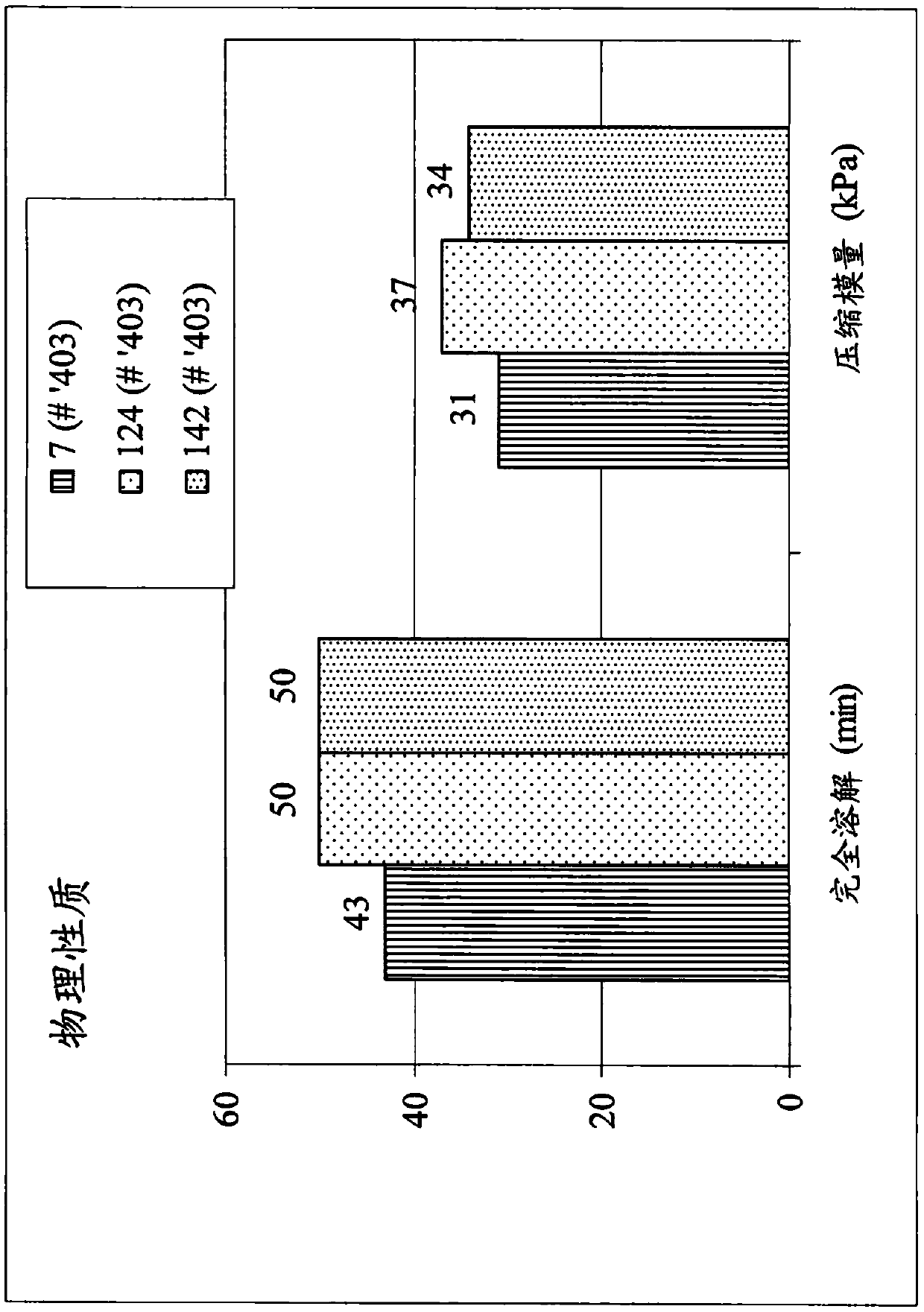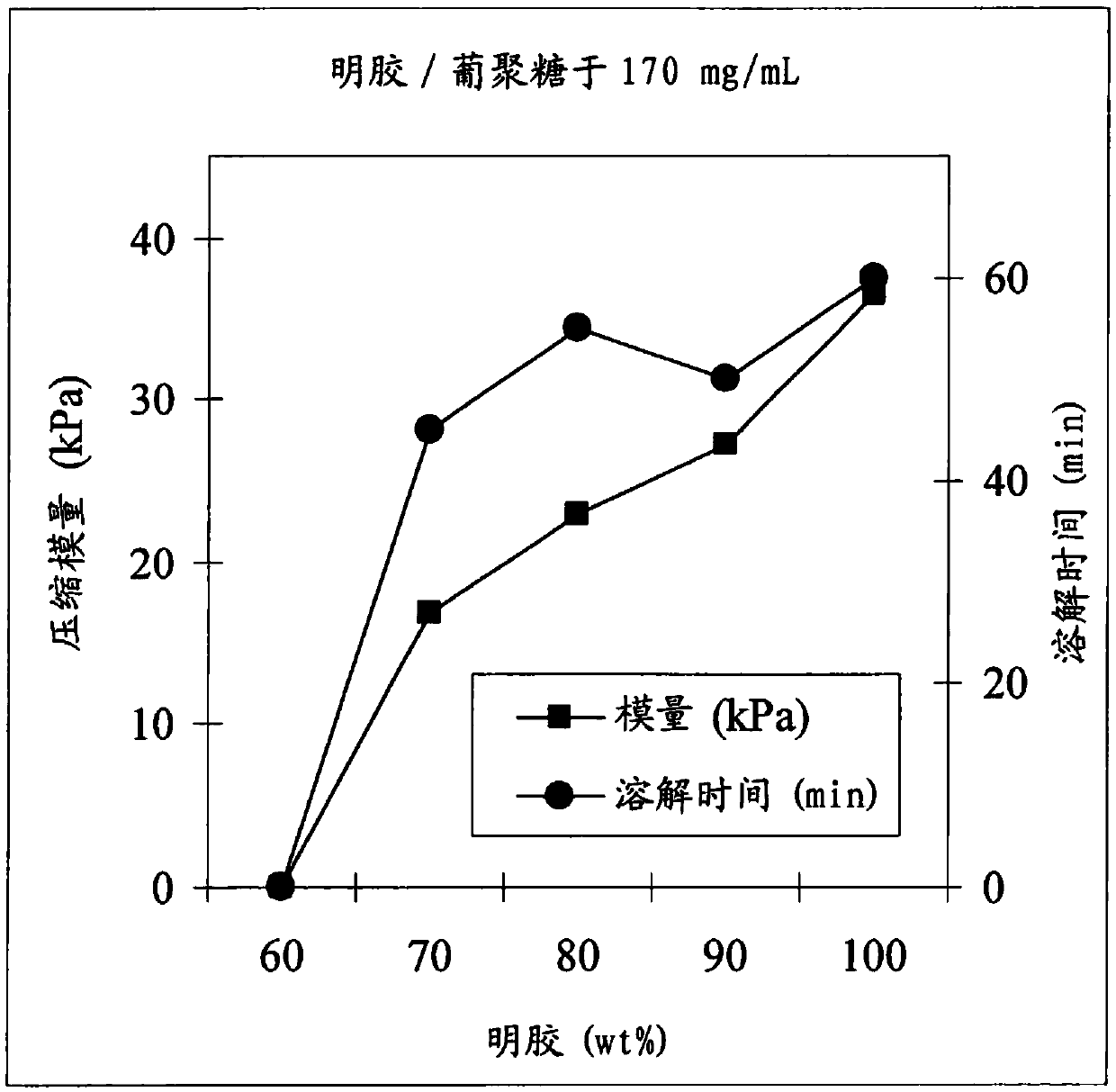Hydrogel adapted for treatment of acute dermal wounds
A hydrogel and gelation technology, which can be used in skin diseases, medical preparations with non-active ingredients, prostheses, etc., and can solve problems such as limiting function or aesthetics.
- Summary
- Abstract
- Description
- Claims
- Application Information
AI Technical Summary
Problems solved by technology
Method used
Image
Examples
preparation example Construction
[0104] In preparing the compositions of the present disclosure, the polymer components can be mixed together with sufficient water (or other solvent) such that the polymers interact as discussed herein to form the hydrogel matrix. The polymers can be added to a mixing vessel for drying and then hydrated together, or separate solutions of each polymer (e.g., stock solutions, which can be provided in various concentrations to dilute to form a hydrogel composition) are prepared and then mixed in Together. Buffers or titrants may be added to adjust pH and ionic strength. The combination of components can then be mixed under heating (eg, to a temperature above the liquid transition temperature discussed herein) to form a homogeneous hydrogel composition. This mode of preparation allows for hydrogel matrices suitable for certain uses in which the therapeutic benefit depends on the properties of the components of the composition but not on the overall structure of the hydrogel itsel...
Embodiment 1
[0252] Example 1. Preparation of Gelatin / Dextran Compositions
[0253] Compositions according to one embodiment of the present disclosure were prepared by sequentially adding liquid and powdered materials (Table 1 ) at elevated temperatures at specific time points while mixing to maintain a homogeneous state of the liquid. The solution is then sterile filtered, dispensed aseptically into vials, sealed, and stored at refrigerated temperature.
[0254] Table 1
[0255]
[0256]
[0257] Glucose and Medium 199 (1.17 mM phosphate ion concentration) were measured and transferred to a preheated water-jacketed (50° C.) glass vessel and mixed using a stir bar. Allow the mixture to equilibrate to 50 °C before distributing L-cysteine, L-alanyl-L-glutamine, L-glutamic acid, L-lysine, and disodium EDTA into containers containing medium 199 middle. After equilibration time, dextran powder was added and the components were mixed. Once the dextran appears to be in solution, the g...
Embodiment 2
[0260] Example 2. Preparation of Gelatin / Dextran Compositions Containing Phosphate Buffer
[0261] Compositions were prepared by sequentially adding liquid and powdered materials (Table 2) at elevated temperatures while mixing to maintain liquid homogeneity.
[0262] Table 2
[0263]
[0264]
[0265] Different from the composition of Example 1, the composition formulation of this example was prepared using phosphate buffered saline (PBS) with a phosphate ion concentration of 65 mM. Also, no L-alanyl-L-glutamine or 50% glucose was added in this example. Specifically, the composition of this example was prepared by first placing 2,282 ml of PBS in a preheated water-jacketed (50° C.) glass vessel and mixing using a stir bar. The mixture was allowed to equilibrate to 50°C, then 375 μl L-cysteine, 6.9 ml L-glutamic acid, 13.8 ml L-lysine and 24.2 ml disodium EDTA were dispensed into vessels containing PBS. After equilibration time, 137.5 g of dextran powder was added an...
PUM
| Property | Measurement | Unit |
|---|---|---|
| molecular weight | aaaaa | aaaaa |
| molecular weight | aaaaa | aaaaa |
| molecular weight | aaaaa | aaaaa |
Abstract
Description
Claims
Application Information
 Login to View More
Login to View More - R&D
- Intellectual Property
- Life Sciences
- Materials
- Tech Scout
- Unparalleled Data Quality
- Higher Quality Content
- 60% Fewer Hallucinations
Browse by: Latest US Patents, China's latest patents, Technical Efficacy Thesaurus, Application Domain, Technology Topic, Popular Technical Reports.
© 2025 PatSnap. All rights reserved.Legal|Privacy policy|Modern Slavery Act Transparency Statement|Sitemap|About US| Contact US: help@patsnap.com



